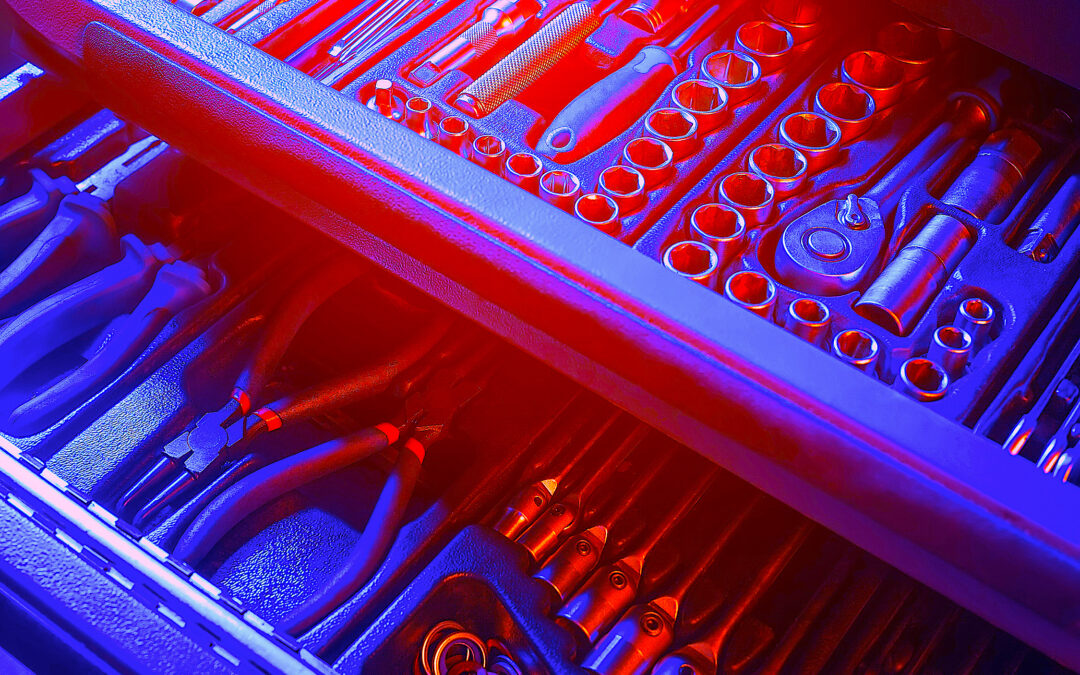In the maintenance world, there are two types of inventory that must be managed. The first, which most people know as Maintenance, Repair and Overhaul (MRO), consists of spare or replacement parts. These items can be held on site in specialized physical inventory locations as regular, in-house-stocked MRO parts. Or they can be recorded in the inventory section of the maintenance management software as either non-stock, regularly purchased items, or spot-buy, one-time-purchase items. (The latter two types are procured and brought to the site on a just-in-time (JIT) “as needed” basis.)
A less common, but equally important type of managed inventory consists of specialized tools shared by the maintenance group. Unlike regular hand tools kept in a maintainer’s personal toolbox, these are usually, larger, more expensive, occasional-use items not covered under a regular tool-policy staff agreement. They can include items such as 1-inch drive and larger socket sets, oversize wrenches, power tools, and specialized predictive-maintenance diagnostic tools. Depending on the type of plant and operations, managed tool inventories can also include equipment such as scissor lifts, hydraulic lifts, genie booms, etc.
When set up and run effectively, a tool-inventory-management system can contribute significantly to maintenance efficiency. Unfortunately, this strategic approach is often overlooked or poorly executed. Managing and waiting for rental tools or dealing with lost or broken ones can lead to many avoidable lost hours of resource utilization and unnecessary equipment downtime.
IMPLEMENTING A TOOL PROGRAM
Almost all work-order systems provide a section on the work order for required tools to perform the work. As part of the planning and scheduling process, both spare parts and tools can be identified and readied as part of the work preparation process.
Similar to MRO parts, specialized tools can be managed within a site’s asset-management software. Due to the software’s level of sophistication, though, it may not actually have a provision for tool management. If that’s the case with your system, larger tools can be managed as a class of assets for calibration (as in lifting, diagnostic, and measuring equipment) certification and repair maintenance.
To ensure tools are location-managed and condition-maintained, a controlled location, commonly referred to as a tool room or tool crib, is required. Depending on a site’s size and number of tools in question, a tool room or crib can be managed by dedicated personnel or MRO-stock personnel or, alternatively, be self-managed by maintenance personnel.
COMPONENTS OF SUCCESSFUL PROGRAMS
Ensuring that a tool program is managed effectively begins with recognition of its value. That involves implementation of a tool-management strategy. The hallmarks of successful tool management include:
♦ Development of tool-management Standard Operating Procedures (SOPs) and workflow diagrams. SOPs for taking out and returning items to the tool inventory and managing broken or defective ones should be visibly posted (and prominently) in the tool-room area.
♦ Use of the asset-management software program tool section to catalog and manage distribution and repair of tools through the work-order system. Similar to MRO inventory, tools can be managed as both stock and non-stock items.
♦ Implementation of a 5S approach to storing, displaying, and identifying tools in the tool-room area. All tools are to have a designated place, making use of “shadow boards” or customized drawer dividers or liners for smaller items. An outline of a tool painted on a background board facilitates rapid recognition of the item’s availability. (See The RAM Review article, “Organize Your Toolbox,” Aug. 8, 2020.) Designated areas for larger tools can be assigned/denoted through display of laminated photos of the actual items. Painted-line, floor-space areas can be assigned to larger lifting tools.
♦ Implementation of a user ID-tag and/or or repair-tag program. In such programs, tags are typically hung at the tool’s designated place when the item is in use or being repaired. This leads to quick determination of who has the tool, for which job it’s being used, and its current location in the plant.
♦ Making the tool room/tool crib access-controlled.
♦ Setting an expectation that, in the absence of dedicated tool-room or MRO-inventory staff, trades using the tools are collectively responsible for the items’ cleanliness, order, repair, and distribution.
♦ Use of input from trades on the design and development of the tool-management strategy and program
While effective management of specialized tools is definitely a best practice, it’s often neglected or overlooked. If your organization is seeking ways to improve maintenance efficiency, maybe it’s time to visit, or revisit, your tool management strategy and approach.TRR
Click Here To Read The Referencse Aug. 8, 2020, Article
“Organize Your Toolbox!”
ABOUT THE AUTHOR
Ken Bannister has 40+ years of experience in the RAM industry. For the past 30, he’s been a Managing Partner and Principal Asset Management Consultant with Engtech industries Inc., where he has specialized in helping clients implement best-practice asset-management programs worldwide. A founding member and past director of the Plant Engineering and Maintenance Association of Canada, he is the author of several books, including three on lubrication, one on predictive maintenance, and one on energy reduction strategies, and is currently writing one on planning and scheduling. Contact him directly at 519-469-9173 or kbannister@theramreview.com.
Tags: reliability, availability, maintenance, RAM, maintenance management systems, inventory management, planning and scheduling, work orders, MRO, tools, tool cribs, tool rooms



